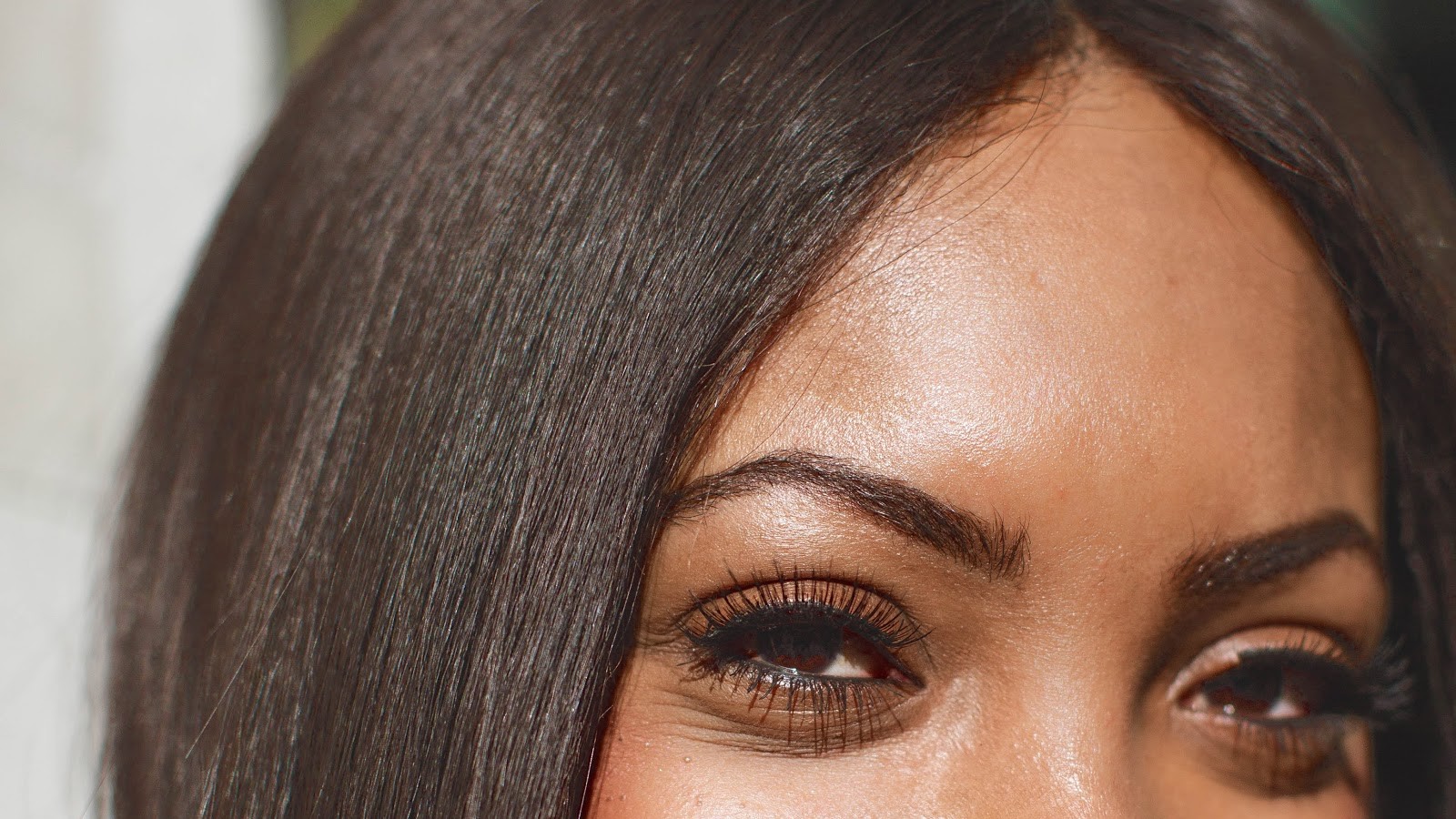If you've landed on this page, chances are you've already relaxed your hair. Congrats on taking that first step! Now, the marathon of hair care begins 'cause unfortunately, caring for relaxed hair is even harder than caring for natural hair.
Why does relaxed hair require so much care?
Imagine you take a human skeleton and dismantle it completely. You throw away a couple of the bones, hammer several others into interesting new shapes, and then attempt to mush them all back together. You have no instructions, you have to make it up as you go.
The end result? Well, it's still human shaped. You put the skull back where it belongs, though it seems like you mistook some arm bones for leg bones. Despite your best efforts to be accurate, it's quite different from the skeleton that you began with.
Before you dismantled the skeleton, you were able to pose it with ease. The bones moved easily against one another. However, after rearranging the skeleton, you find it's much more prone to snappage -- the bones don't fit quite so naturally into their new spots. You try to move the skeleton into an action pose but uh oh! Some of the bones fall right off.
This is basically what happens to the cortex of your hair (the thickest layer of the hair, located below the hair cuticle) when it's relaxed. Most of the basic building blocks remain after relaxing, but they're arranged differently from when you began. Your hair still is hair, but it's not like what grows out of your scalp. It's core structure has been completely changed and moved about.
And just like your newly formed semi-human skeleton, relaxed hair isn't quite as sturdy and bendy as it was before. Research has shown that relaxed hair can be 30 to 50% weaker than natural hair due to the process of relaxing. Relaxing leads to the cortex being weakened, with decreased tensile strength (translation: if you pull it tight, it'll be more likely to snap -- just like the bones on the skeleton.)
It's not only the "bones" of your hair that are changed by relaxing, the "skin" (aka -- the cuticle) is also altered. When relaxing, the cuticle of the hair can become lifted, creating higher hair porosity and an increased potential for further damage. A lifted/damaged cuticle also creates the appearance of less shine and is more likely to become tangled and torn when brushing.

So what are the actual consequences? Not only is your hair more prone to breakage, you also might have to deal with extra frizz and tangles. And not only are frizz and tangles annoying in and of themselves, they can worsen the amount of breakage that you experience.
So, what can you do about it?
How to care for relaxed hair
Relaxing is inherently damaging. There's no way around it. Your number one move after relaxing is to prevent further damage as much as possible. This is especially important since damage breeds damage (hairs split upwards and friction harms the cuticle) -- you're the only one who can help stop the cycle.
To prevent further damage to relaxed hair, we recommend you follow these relaxed hair care best practices.
How to style relaxed hair?
Answer: Utilize low-tension hairstyles
Because relaxed hair is so prone to snapping when pulled tight, it's best to avoid pulling relaxed hair tight. While our favorite is the ever popular low-ponytail, a quick google search for "low tension hairstyles" can provide plenty of styling inspiration.
How often should you wash relaxed hair?
Answer: As little as you can.
Shampoo infrequently, and always condition after shampooing (including the roots) Shampooing too frequently can be harmful to relaxed hair, since the already lifted cuticle can become stretched and deformed when in contact with water. Conditioning after shampooing can help counteract some of this damage, as conditioners can provide a temporary protective layer on damaged cuticles.
How should you wash relaxed hair?
Answer: Wash in the direction of your ends, and use a gentle shampoo.
We're all used to scrubbing back and forth, it's true. But just because we're used to it doesn't mean that it's actually a good practice. Instead, push the shampoo and conditioner down your strands, from root to tip. Wash your scalp in the same manner to get a good clean, using the pads of your fingertips and not your nails. And remember to keep the tension low -- wet relaxed hair is even more prone to snappage than dry relaxed hair.
Should you moisturize relaxed hair every day?
Answer: you probably won't want to.
Sure, relaxed hair is generally more porous than non-relaxed hair. But if your method of moisturizing is to get your hair sopping wet with water and add conditioner, well, you'll want to calm down a bit. Water is bad for relaxed hair, so it's best to condition only when you need a cleanse. If your moisturizer doesn't require a rinse, feel free to moisturize as feels appropriate to you.

How to detangle relaxed hair?
Answer: with care.
Relaxed hair is super prone to breakage, so you won't want to over-brush. Instead, detangle with a wide tooth comb or, even better, your fingers. You'll want to be slow and gentle, like you're unwrapping a very fragile present. It might be annoyingly painstaking, but your hair will thank you long term.
How often should you relax your hair?
Answer: Only once every 12 weeks (or longer), and only on new hair growth.
Repeated treatments can lead to hair breakage, which usually occurs at the junction of the new growth and previously treated hair. Relaxing treatments should be applied carefully to new growth only to prevent excessive breakage.
Do you need to use the same relaxer that you used before?
Answer: You'll definitely want to test a new relaxer out before using it.
Some relaxers are incompatible with one another, and can make hair extremely fragile. If your hair has been previously relaxed, the new relaxer should be first applied to a single strand of hair to test its compatibility. If the relaxer causes that strand to break, your current product may be incompatible and should not be applied.
Can you apply hair dye on relaxed hair?
Answer: Technically yes, but you might regret it.
You'll want to.limit further chemical processes on relaxed hair, including bleach. Similar to relaxing, bleaching hair can raise the hair cuticle and increase hair porosity. Because both are damaging processes, it is best for hair health if only one treatment is utilized.
Wanna learn even more about haircare? Here's what you should check out next:
pH Balanced Shampoo: Everything You Need To Know
The heck does "pH balanced" even mean???
How To Grow High Porosity Hair
Buh-bye, breakage.
How Long Should I Wait To Dye My Hair Again?
**glances at clock**
What Is A Hair Cuticle?
Let's learn more about your hair's first line of defense against damage. ⚔️
Hair Texture Changes 101
The good, the bad, and the ugly ... when it comes to hair texture changes, we've got you covered.




